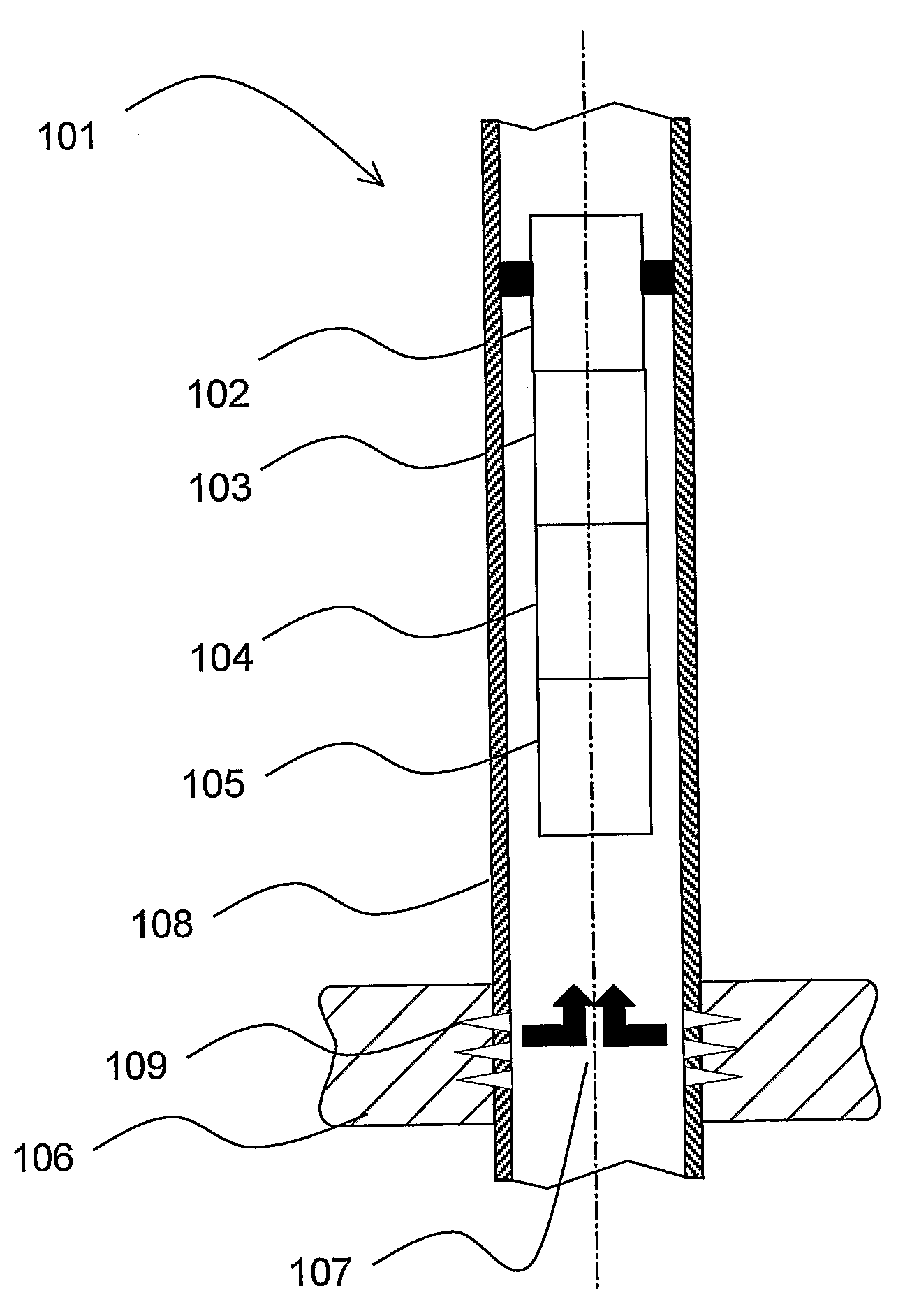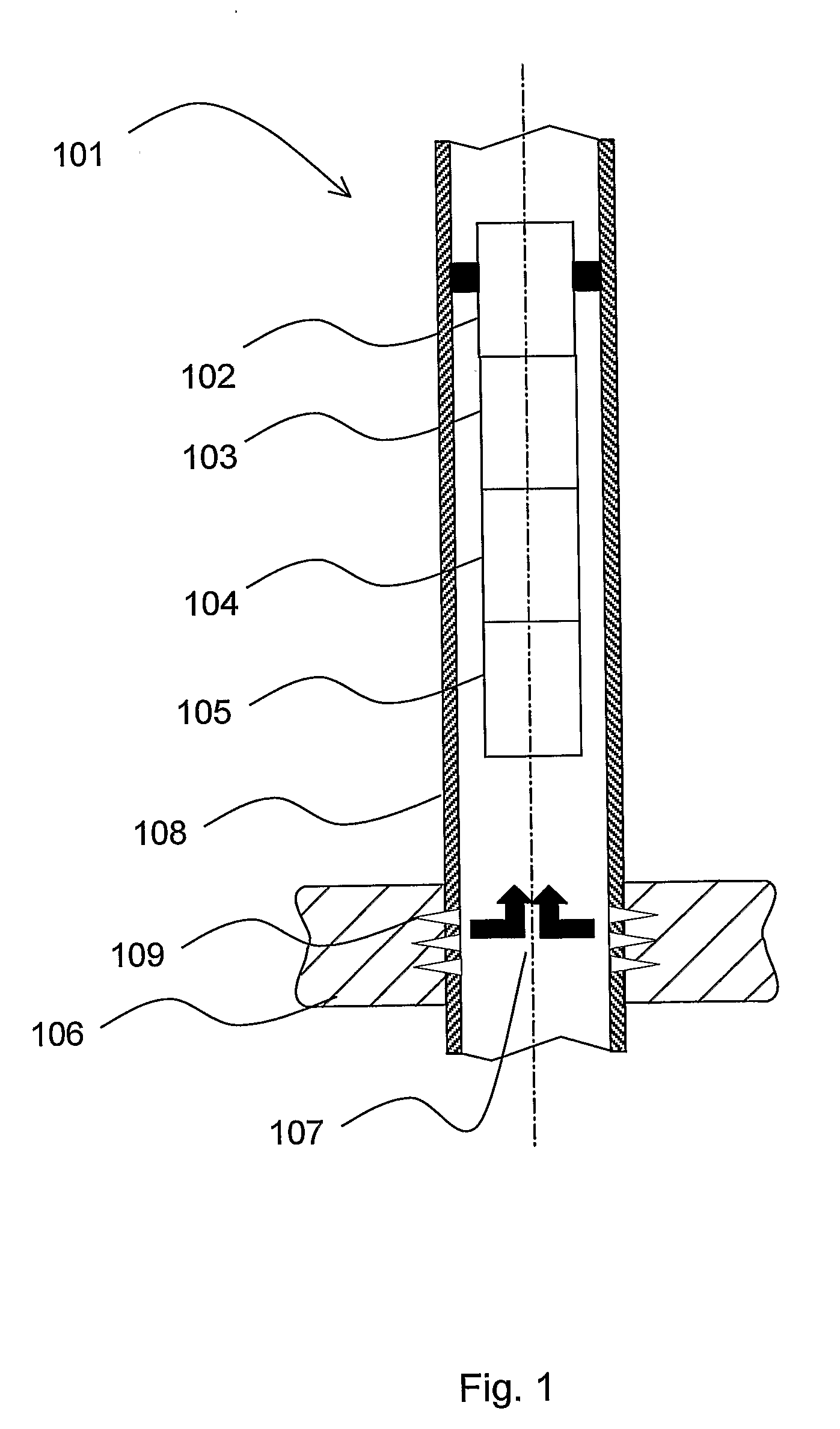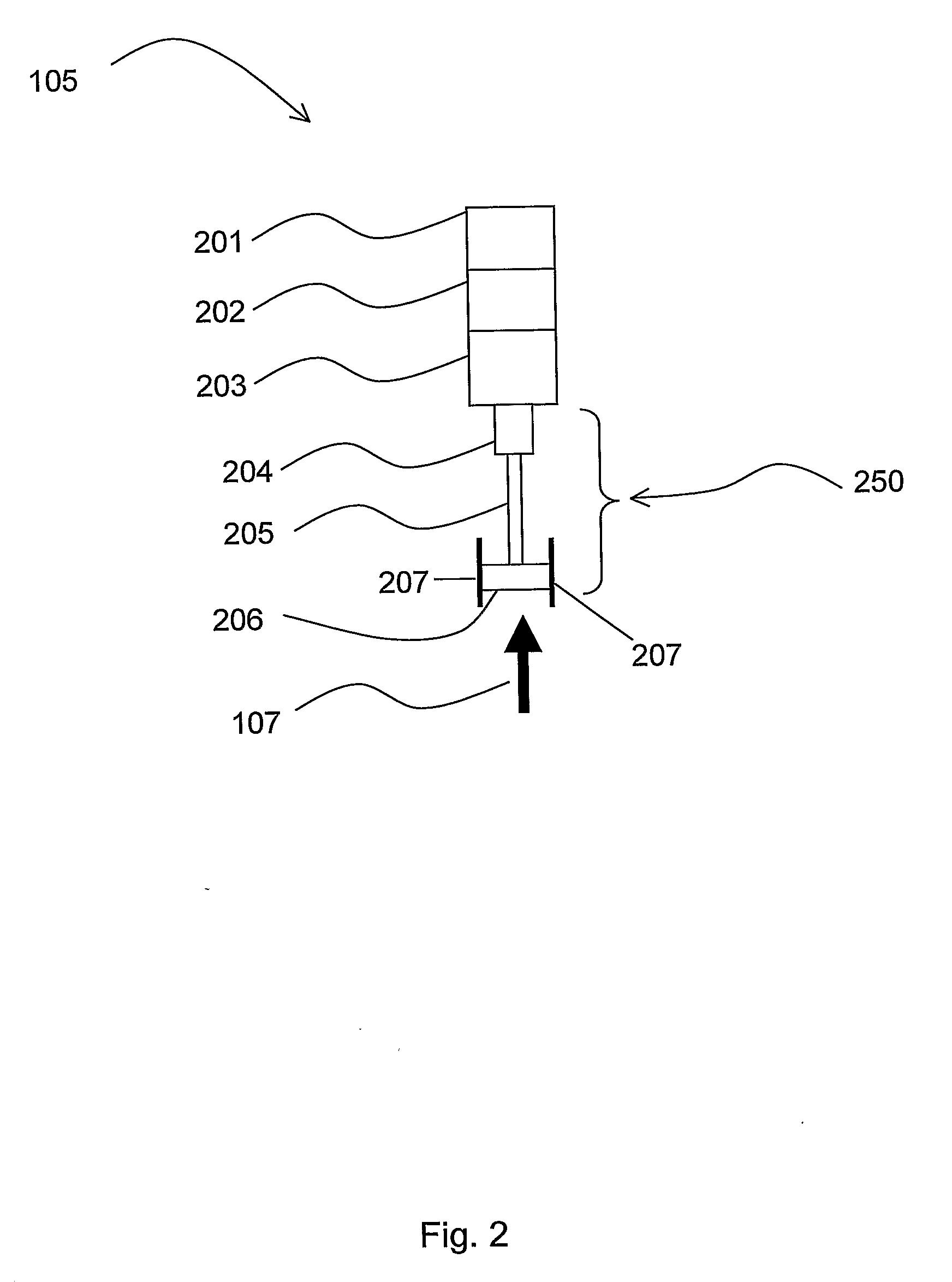A device and a method for downhole energy generation
- Summary
- Abstract
- Description
- Claims
- Application Information
AI Technical Summary
Benefits of technology
Problems solved by technology
Method used
Image
Examples
Example
[0075]FIG. 1 illustrates an example of a subterranean well 101 which embodies principles of the present invention. It is to be understood that the various embodiments of the present invention described herein may be utilized in various orientations, such as inclined, inverted, horizontal, vertical, etc., and in various configurations, without departing from the principles of the present invention.
[0076]The well 101 is described herein as being a producing well in which fluid is produced from a reservoir formation 106 into a tubular string 108, and is then flowed through this tubular string 108 to surface. However, it is to be clearly understood that the principles of the present invention may be incorporated into other types of wells and other systems, for example, where fluid is injected into a formation or circulated in the well (such as drilling operations), where fluids pass from a relatively high pressure source to a relatively low pressure source within the well, or where flui...
PUM
 Login to View More
Login to View More Abstract
Description
Claims
Application Information
 Login to View More
Login to View More - R&D
- Intellectual Property
- Life Sciences
- Materials
- Tech Scout
- Unparalleled Data Quality
- Higher Quality Content
- 60% Fewer Hallucinations
Browse by: Latest US Patents, China's latest patents, Technical Efficacy Thesaurus, Application Domain, Technology Topic, Popular Technical Reports.
© 2025 PatSnap. All rights reserved.Legal|Privacy policy|Modern Slavery Act Transparency Statement|Sitemap|About US| Contact US: help@patsnap.com



